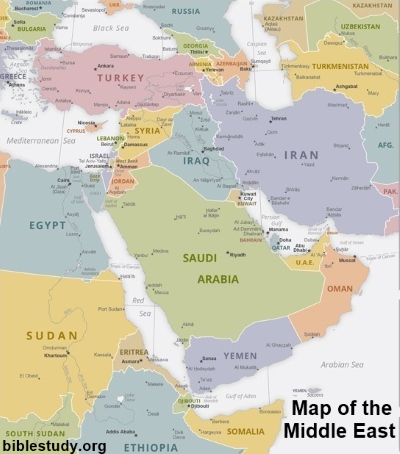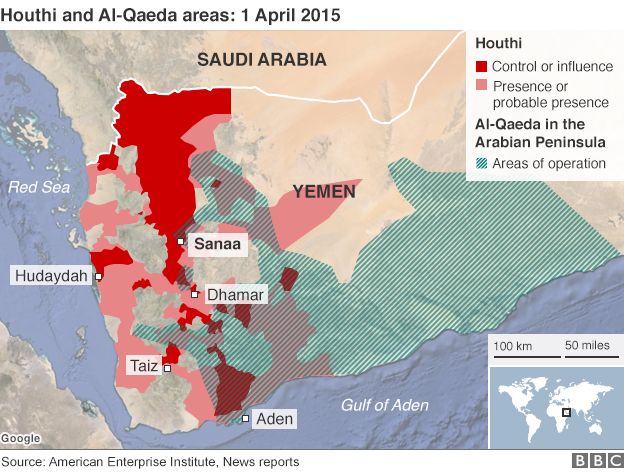One of the abiding myths of the last half of the 20th century was that democracy, combined with free trade, would lead to liberal societies and peace between nations.
The leading example of this notion was the United States. And indeed, in the 1950s and 1960s, it did seem to be the Promised Land. To the rest of us, Hollywood films depicted a nation where large cars and suburban homes were every American’s birthright.
During the Vietnam War, some of this image lost its gloss, but the American Dream continued to draw millions to the United States. The rest of the world was told that if we attained democracy and applied the capitalist model, we, too, could aspire to a car in every garage and a chicken in every pot.
And when the Soviet Union went into meltdown a quarter century ago, this was taken as the final victory of the American model over communism. History, as Francis Fukuyama famously announced, was dead. For a brief, euphoric moment, we thought the end of the Cold War would usher in an era of peace and prosperity.
Welcome, then, to the bloody new world of resurgent nationalism and religious extremism. Once suppressed by autocratic rulers allied to either of the two superpowers, these forces are now threatening to tear the world apart.
And yet there are more functioning democracies than ever before, and all of them are part of the global economy.
Take Russia as an example. Here we have a very popular, iron-fisted leader who has presided over a freewheeling capitalist system that has brought Russians an unprecedented level of prosperity. Granted, much of this was due to rising oil prices, and the Russian standard of living is now dropping with falling prices of oil. However, Putin remains personally popular, despite being as autocratic as ever.
Leaders with dictatorial tendencies continue to win elections.
Turkey provides us with another example of a democracy with a flourishing capitalist economy that is being increasingly run like an autocracy by its president, Recep Erdogan. Despite his growing despotic tendencies, Erdogan remains hugely popular, and continues to win elections with healthy majorities.
Finally, Sri Lanka’s Mahinda Rajapaksa is yet another example of an authoritarian ruler who spurns democratic values, and yet remains personally popular. Although he lost the last presidential election in January, this was due more to miscalculation and misplaced faith in his stars than a fall in his appeal.
A call for early polls encouraged the formation of a rare opposition alliance — allegedly backed by India — that defeated the president. But Rajapaksa remains popular with the majority Sinhalese voters, and managed to win 47pc of the popular vote despite the hatred he aroused among the Tamil and Muslim minorities. Now there is a real possibility of the ex-president bouncing back to power in the next general elections.
So how do we explain this popularity of leaders with dictatorial tendencies? Despite trampling over human rights and personal freedoms, they continue to win elections, and enjoy wide public approval. Could it be that their supporters want strong men to maintain order, even by using unconstitutional means? Another reason could be that the majority distrusts the educated, liberal elites who clamour for human rights.
John Grey, in an article published in Harper’s Magazine titled ‘Under Western Eyes’ writes: “That democracy can be a vehicle for tyranny was well understood by earlier generations of liberal thinkers. From Benjamin Constant, Alexis de Tocqueville, and John Stuart Mill through to Isaiah Berlin, it was recognised that democracy does not necessarily protect individual freedoms…
“Legal and constitutional protections have little force when majorities are indifferent or hostile to liberal values… Most human beings, most of the time, care about other things more than they care about being free. Many will vote for an illiberal government if it promises security against hardship, protects a way of life to which they are attached, and denies freedom to people they hate.”
Now, of course, few liberals concede that in certain circumstances, democracy can be used as an instrument of oppression against certain sections of the population. In the United States, that flag bearer of democracy, we have seen individual rights steadily circumscribed by the Patriot Act. The fear of Islamic terrorism has been used since 9/11 to curtail liberties, and to impose draconian laws that would not be out of place in a police state.
In Turkey, a conservative Anatolian majority supports Erdogan as he chips away at secular laws, marginalising the Westernised elites who ruled Turkey for decades. If some heads have to be broken, and secular newspapers have to be shut down, so be it.
But secularism by itself is no guarantee of human rights, either. The worst atrocities of the last century occurred under Nazi and communist rule, both entirely secular ideologies. So clearly, there are no certainties, no magic wand to ensure our freedom. What is needed is constant vigilance and a strong resolve.
Freedom at risk
by Irfan Husain, dawn.com
irfan.husain@gmail.com
آزادی خطرے میں ہے!
آج کی دنیا میں پہلے سے کہیں زیادہ فعال جمہوریتیں ہیں اور یہ سب کی سب عالمی معیشت کا حصہ ہیں۔ روس کی مثال لے لیں۔ اس کے آہنی رہنما، مسٹر پیوٹن، نے فری مارکیٹ اور سرمایہ دارانہ نظام کو اپنا کر روسیوں کو غیر معمولی خوشحالی سے مستفید کیا‘ اگرچہ اس میں تیل کی بڑھتی ہوئی قیمت کا بھی ہاتھ تھا اور آج کل تیل کی قیمت کم ہونے کی وجہ سے روسیوں کو پھر مشکلات کا سامنا ہے، لیکن سخت گیر آمر ہونے کے باوجود پیوٹن ابھی تک ایک مقبول رہنما ہیں۔ جمہوریت کی دوسری مثال ترکی ہے‘ جو فروغ پاتی ہوئی آزاد معیشت رکھتا ہے؛ تاہم اس پر ایک آمرانہ مزاج کے صدر، مسٹر اردوان، کی حکومت ہے۔ آمرانہ رویوں کے باوجود وہ ملک میں بہت مقبول ہیں اور طویل عرصے سے انتخابات میں بھاری کامیابی حاصل کر رہے ہیں۔
سری لنکا کے مہندا راجا پاکسی ایک اور مثال ہیں‘ جنہوں نے جمہوری قدروں کو بالائے طاق رکھتے ہوئے آمرانہ طرز حکومت اختیار کیا اور بہت مقبول ہوئے۔ اگرچہ وہ گزشتہ انتخابات میں شکست سے دوچار ہوئے، لیکن اس شکست میں ان کی طرف سے اندازے کی غلطی، ستاروں پر ضرورت سے زیادہ بھروسہ اور کچھ غیر ضروری اعتماد کا عمل دخل تھا۔ ان کی مقبولیت اپنی جگہ پر برقرار ہے۔ دراصل اُنہوں نے قبل از وقت انتخابات کا اعلان کر دیا اور ان کے خلاف بھارتی پشت پناہی سے بننے والا اتحاد غیر معمولی طور پر فعال ہو گیا، اس سے سری لنکن صدر کو شکست سے دوچار ہونا پڑا۔ اس کے باوجود راجا پاکسی سنہالی آبادی میں بہت مقبول ہیں۔ تامل اور مسلمان اقلیتوں نے ان کے مخالف امیدواروں کو ووٹ دیے لیکن راجا پاکسی مقبول ووٹ کا 47 فیصد حاصل کرنے میں کامیاب رہے۔ اگلے عام انتخابات میں سابق صدر کے پاس دوبارہ اقتدار حاصل کرنے کا موقع ہے۔
اب سوال پیدا ہوتا ہے کہ ان آمرانہ رویوں کے حامل رہنمائوں کی مقبولیت کی کس طرح وضاحت کی جائے؟ انسانی حقوق اور شخصی آزادی کی پامالی کے باوجود وہ بدستور انتخابات میںکامیابی حاصل کرتے رہے ہیں۔ کہیں ایسا تو نہیں کہ ان کے ووٹرز اقتدار پر کسی طاقتور شخص کو دیکھنا چاہتے تھے جو امن و امان قائم کرے‘ چاہے اس کے لیے غیر آئینی طریقے ہی کیوں نہ استعمال کرنا پڑیں؟ ایک اور وجہ یہ ہے کہ عوام کی اکثریت تعلیم یافتہ، لبرل اور انسانی حقوق کے علم برداروں کو دل سے پسند نہیں کرتی۔ ''ہارپرز میگزین‘‘ میں شائع ہونے والے اپنے مضمون، ''Under Western Eyes‘‘ میں جان گرے لکھتے ہیں: ''ابتدائی نسل کے لبرل مفکرین کا خیال تھا کہ جمہوریت بھی جبر کا ہی ایک ذریعہ ہو سکتی ہے۔ بنجمن کونسٹنٹ (Benjamin Constant) سے لے کر الیکسز ڈی ٹوکیویل (Alexis de Tocqueville)اور جان سٹیورٹ ملز سے لے کر ایسائیہ برلن (Isaiah Berlin) تک، سب مفکرین کا خیال تھا کہ ضروری نہیں کہ جمہوریت شخصی آزادی کا تحفظ کرے۔ جب معاشرے کے اکثریتی دھڑے لبرل اقدار کے خلاف ہو جائیں یا اُنہیں ان سے کوئی سروکار نہ رہے تو آئینی اور قانونی تحفظ کے پاس کوئی طاقت نہیں رہتی۔ زیادہ تر انسان، اکثر اوقات آزادی سے زیادہ دیگر چیزوں کی پروا کرتے ہیں۔ اگر کوئی آمر بھی ان چیزوں کی فراہمی کا وعدہ کرے، جان و مال کو تحفظ دے تو لوگ اُسے ووٹ دیں گے۔ ایسا کرتے ہوئے وہ اپنی آزادی کو ترجیح نہیں دیں گے۔ ‘‘
ہو سکتا ہے کہ کچھ لبرل افراد یہ تسلیم کر لیں کہ مخصوص طبقوں کے خلاف مخصوص حالات میں جمہوریت کو جبر کے آلے کے طور پر بھی استعمال کیا جا سکتا ہے۔ امریکہ میں جمہوریت کے علمبرداروں نے Patriot Act بنا کر شخصی حقوق کو معطل کر دیا۔ نائن الیون کے بعد سے اسلامی انتہا پسندی کا ہوّا کھڑا کر کے شہری آزادیوں کو سلب کیا گیا اور ایسے سخت قوانین بنائے گئے جن کا تصور صرف ایک پولیس سٹیٹ میں ہی کیا جا سکتا ہے۔ ترکی میں اناطولیہ کا ایک قدامت پسند باشندہ مسٹر اردوان کی اس لیے حمایت کرتا ہے کہ انہوں نے سیکولر قوانین کا خاتمہ کرتے ہوئے مغربی ذہنیت رکھنے والی اُس اشرافیہ کو سائیڈ لائن کر دیا‘ جو کئی عشروں سے ترکی پر حکومت کر رہی تھی۔ سیکولر اخبار نہایت صفائی سے بند کر دیے گئے؛ یہ الگ بات ہے کہ سیکولرازم بھی انسانی حقوق کی مطلق ضمانت نہیں دیتا۔ گزشتہ صدی کا بدترین تشدد نازی اور کمیونسٹ حکومتوں کی طرف سے دیکھنے میں آیا اور یہ دونوں نظریات کے اعتبار سے سیکولر تھیں؛ چنانچہ اس وقت شخصی آزادی کی ضمانت دینے والی کوئی جادو کی چھڑی موجود نہیں۔ ہمیں اس کا تحفظ کرنے کے لیے مضبوط عزم اور پختہ ارادے کی ضرورت ہے۔
- See more at: http://m.dunya.com.pk/index.php/author/irfan-hussain/2015-04-25/11021/74844245#sthash.yTtKITd0.dpuf








